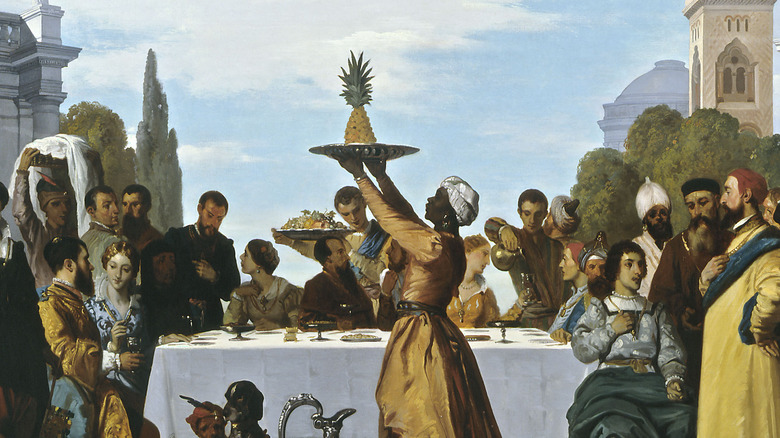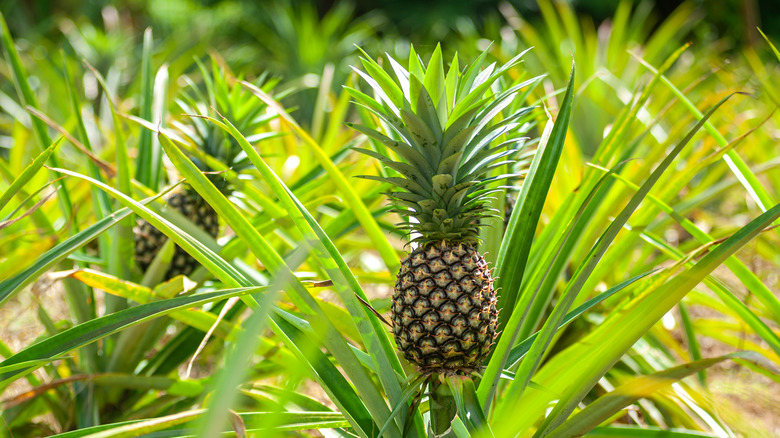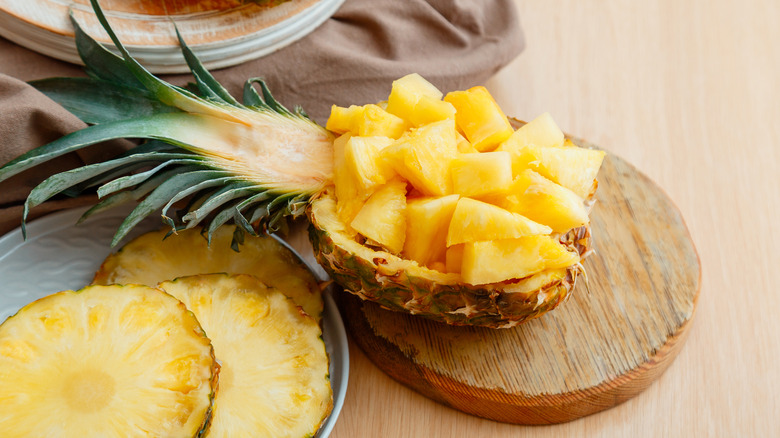In The 1700s, Pineapples Were Wildly Expensive Symbols Of Prosperity
When shopping for items to craft a simple meal, you will likely gravitate toward commonplace and budget-friendly ingredients, but you'll still be tempted to turn down the luxury ingredient aisle. Aside from the fact that they often contain rare and remarkable flavor profiles, luxury goods also serve to impart a certain level of prestige to any chef, whether warranted or not.
The list of foods that are conferred with luxury status is constantly changing. Lobster, for example, used to be served to prisoners but now sells for the market price to bib-clad sophisticates everywhere. Escargot was not always a popular decadent dish – until relatively recently, snails were considered starvation food. Conversely, Mayo was considered a luxury food in France in the 1700s.
Similarly, the pineapple was a symbol of prosperity in the 1700s. If you spotted a pineapple at a party in those times, it would be unthinkable to cut into it. After all, the host probably spent a pretty penny to use the exceptionally rare tropical fruit as a centerpiece or, at the very least, negotiated a bargain with a pineapple purveyor.
The pineapple's peculiar and pricey past
If you walk into almost any grocery store, you'll inevitably be inundated with pineapples in the produce section, perhaps unaware of how to choose the right one. However, this tropical fruit wasn't always such a ubiquitous supermarket find.
Pineapples don't stay fresh for too long. Before modern innovations in agricultural science and shipping infrastructure, it was difficult for the fruit to survive the long journey from the Caribbean, where they grew. As such, they still cost a pretty penny in 1700s America. These fancy fruits weren't for eating but served as decoration and a way to showcase one's status. An economy of pineapple renting sprung up during the era, as many less well-to-do colonists wanted a chance to playact as tropical travelers.
Pineapple's position in the modern world
Over time, the pineapple's status declined as advanced shipping technology made it much more moveable. This trend came to a head in the early 1900s, when produce titan James Dole began to produce a bulk of the world's pineapple from a Hawaiian plantation.
Pineapples still hold a particular symbolic resonance in contemporary society despite falling from the heights of fashion. Though the spiny fruit may no longer decorate castle atriums and firelit banquet halls, a picture of a pineapple does currently serve as an indicator that you and your significant other may be looking for a romantic partner outside the bounds of your relationship.
In certain parts of the world, fruit is still sold at premium prices, and Japan has a massive luxury fruit market. People can buy watermelons that have been grown into wacky shapes, as well as giant grapes and strawberries. A few years ago, a pair of Yubari cantaloupe melons sold for a record $29,473 at auction.


